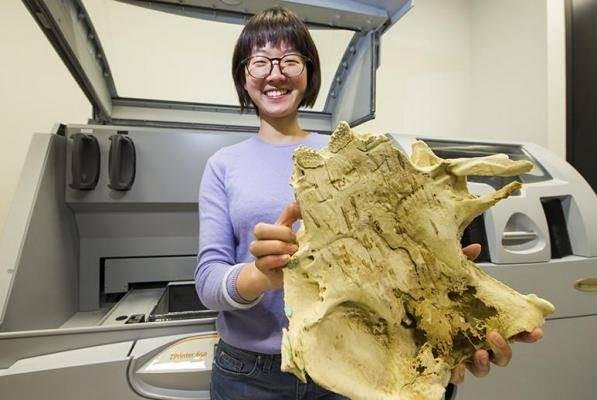God! Scientists Discover 400 Million-Year-old Fish Who Has Jaws Similar to Humans

Scientists in Australia have discovered a 400-million-year-old fish fossil. Uniquely fossil fish has a jaw-like structure that resembles humans. Paleontologists believe that the jaws of these ancient fish species represent the evolutionary predecessors of the human jaw. The study has also been published in the journal Scientific Reports.
"The fossils reveal in elaborate detail, the ancient fish's jaw structure is part of an evolutionary lineage that ultimately leads to humans," said Yuzhi Hu, a postdoctoral researcher at the Australian National University in an official statement.
Researchers found fish among the limestone strata along the shores of Lake Burrinjuck, near Canberra, the capital of Australia. The specimen species is not exactly clear, but researchers believe the fossil is a kind of armored fish known as placoderm and belongs to the Buchanosteidae family.
Scientists used high resolution CT scans and 3D printers to replicate the jawbone of the fish. The process helps paleontologists rearrange fish jaws and better understand the unique structure of the jaws of the specimen. The fossils are very well preserved, and the 3D imaging process shows internal cartilage of the jaw cartilage.
"The amazing preservation of fossils allows us to track the path that carries the blood supply to the jaw and brain," Hu said. The position and structure of the carotid artery of the fish remember the flow of blood to the face, jaw and brain in humans and mammals. Until now, scientists believe that the extinct placoderms represent an evolutionary dead end, an isolated lineage.
But the discovery of a group of Chinese maxillary placoderms shows a much closer relationship to humans than previously thought. The group is named for the presence of the maxillary bone called the maxilla, similar to the human upper jawbone.
The discovery of the latest Australian placoderm confirms the relationship between humans and placoderms, and its remarkable preservation offers an even more anatomical context. "Australian fossils help us to interpret these aspects in Chinese maxillate placoderms," said researcher Jing Lu as quoted by UPI.com, Thursday (17/08/2017).